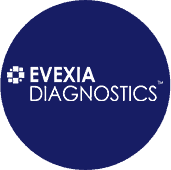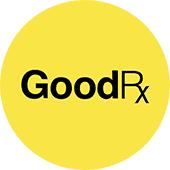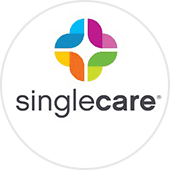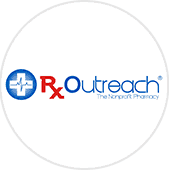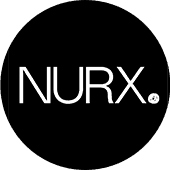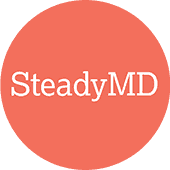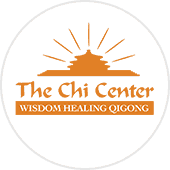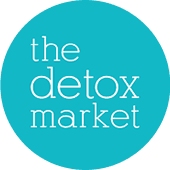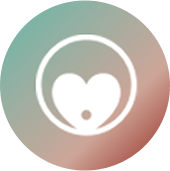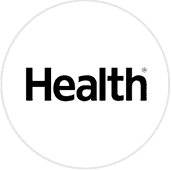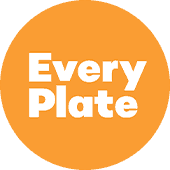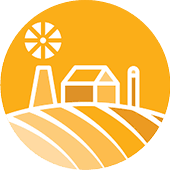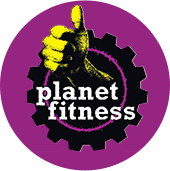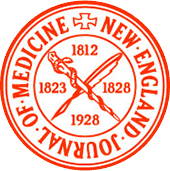While many of us are aware of what breast cancer is, it’s important for us to be informed about the risk factors for breast cancer, the symptoms, and how it’s treated.
According to the Centers for Disease Control and Prevention (CDC), breast cancer is the second most common cancer in women. But although breast cancer is more common in women, anybody can get breast cancer – no matter their gender. This is why everybody should be informed about the signs and symptoms of the disease.
The good news is that breast cancer can be treated, and the earlier it’s detected, the more effective the treatment is likely to be.
What exactly is breast cancer?
With cancer, mutations take place in the genes that regulate cell growth. As a result, our cells divide and multiply uncontrollably, possibly spreading to other parts of the body. In breast cancer, cancer usually occurs in the milk glands, ducts, or fatty tissue.
The cells can get into other parts of the breast. They can also invade the lymph nodes, which are under the arms. From there, the cancer cells travel to other parts of the body through the lymphatic system.
What are the symptoms of breast cancer?
The symptoms of breast cancer can include:
- a lump in the breast or the feeling of thicker tissue
- a lump or swelling under your arm
- breast pain
- a nipple discharge, including bloody discharge
- swelling in the breast
- red, pitted skin or peeling, flaking skin on the nipple or breast
- a breast lump or tissue thickening that feels different than surrounding tissue and has developed recently
- sudden change in the shape or size of your breast
- an inverted nipple
Not all breast lumps are cancerous. There are other potential causes for breast pain, lumps, or swelling. However, if you have any of the above symptoms, it’s best to err on the side of caution and make an appointment with your doctor.
What are the risk factors for breast cancer?
According to the Mayo Clinic, experts have identified a number of environmental, lifestyle, and genetic factors that can put you at a greater risk for developing breast cancer.
Is breast cancer genetic?
Between 5 and 10 percent of breast cancers are linked to inherited gene mutations. Certain gene mutations – such as breast cancer gene 1 (BRCA1) and breast cancer gene 2 (BRCA2) – strongly increase your chances of getting breast or ovarian cancer.
If you have a family history of breast cancer, it might be wise to talk to your doctor about testing for BRCA mutations. This will include a blood test. Your doctor might refer you to a genetic counselor to discuss genetic testing.
Beyond genes, other risk factors for breast cancer include:
- Age. Your risk factor increases as you age.
- Gender. While men can have breast cancer, women are far more likely to develop it.
- Alcohol use. Alcohol use disorder, often called alcoholism or alcohol addiction, can increase your risk of breast cancer (and other cancers).
- Smoking. Cigarettes are a well-known carcinogen, and you’re more likely to develop cancer if you smoke.
- Menstruating early. Those who began menstruating before the age of 12 are more likely to develop breast cancer.
- Late menopause. Starting menopause after the age of 55 can increase your risk.
- Late pregnancy. Those who have had their first child after age 35 have an increased risk for breast cancer.
- Having never been pregnant.
- Undergoing hormone therapy. Certain hormone therapies can increase your risk of developing cancer.
- Previous breast cancer. If you’ve had breast cancer before, you have an increased risk of it developing again.
If you fit several of the above-mentioned risk factors for developing breast cancer, speak to your doctor about your concerns. Those who have a higher risk should be screened for breast cancer more often.
How can I lower my risk for breast cancer?
Many of the risk factors listed above are not within your control – we can’t control our age, gender, or when we began menstruating, for example. However, there are some healthy lifestyle choices we can make to reduce our chances of developing breast cancer.
Reduce alcohol intake
Binge-drinking or having more than two drinks per day can be a risk factor for breast cancer as well as other health conditions. However, even less alcohol can also be a danger – one report analyzed a great deal of research and found that as little as one drink per day increases your risk for breast cancer.
Quit smoking
Cigarette smoke can increase your risk for a range of cancers, including breast cancer, as well as other chronic conditions.
To help our Members make healthier lifestyle choices, we offer a range of services to complement our Medical Cost Sharing model. This includes Personalized Health Coaching, where a qualified coach helps you to set goals – like smoking cessation – and identify a way to make that goal happen.
Preemptive treatment
Those who are at extremely high risk for breast cancer – for example, those who have a BRCA1 or BRCA2 gene mutation – might decide to undergo preemptive treatment.
In some cases, this includes undergoing a prophylactic mastectomy, which is the surgical removal of one or more breasts in order to prevent breast cancer.
If you’re at high risk for breast cancer, discuss your options with your doctor. They will help you figure out the best way forward and weigh the pros and cons of preemptive treatment.
Screening for breast cancer
While you can’t always prevent breast cancer, you can often detect it early. The earlier it’s detected, the better the survival rate.
The American College of Physicians (ACP) suggests that women between the ages of 40 and 49 discuss breast cancer screening with their doctor. They suggest that women aged 50 to 74 have mammograms every other year.
The American Cancer Society (ACS) has suggested different guidelines. They suggest that women should have the option of annual screenings at 40 years old. At 45 years old, women should begin having annual screenings, and have screenings every other year from age 55.
If you’re at a higher-than-average risk for breast cancer, your doctor might suggest having screenings more often. Talk with your doctor about your options.
Knew Health Members over the age of 40 get access to share the cost of screening mammograms at 100%. So don’t let cost keep you from being proactive about your breast health.
Should I do a breast self-examination?
Breast self-examination can help you detect any sudden changes in your breast tissue. It’s recommended that you do this exam once a month, at the same time each month, as your breasts might naturally change through the phases of your menstrual cycle.
The ACS points out that current research hasn’t shown the benefit of physical exams, including self-exams. So, while these examinations might help you detect lumps, they’re not a replacement for regular mammograms if needed.
How is breast cancer diagnosed?
If you have symptoms of breast cancer, your first will be to talk with your doctor. They will first do a physical exam and a breast exam. They’ll probably also ask you about your family’s medical history and your personal medical history.
They might also do a mammogram or breast ultrasound. It’s possible that they’ll also request an MRI or breast biopsy in order to determine a diagnosis.
- Mammogram
- Breast ultrasound
- MRI
- Breast biopsy
If you are diagnosed with breast cancer, the next step is to discuss your treatment plan. Your doctor will discuss the options with you.
Knew Health Members are able to share in their medical costs for new illnesses that are diagnosed, including cancer. If you’re looking for preventive health services and a safeguard against large, unexpected medical expenses, like cancer, see how we can help you.
How is breast cancer treated?
There are a few different treatment options for breast cancer. These treatments include:
- Surgery
- Hormone therapy
- Chemotherapy
- Radiation
- Other medication
The treatment your doctor recommends depends on the type of breast cancer you have as well as the stage of cancer. Speed is of the essence here, because the earlier you address the breast cancer, the less likely it is to spread further. This is why early detection is one of the most important factors in determining whether you survive breast cancer or not.
The great news is that the survival rate of breast cancer is increasing. According to the ACS, in 1975, the 5-year survival rate for breast cancer in women was 75.2 percent. But for women diagnosed between 2008 and 2014, it was 90.6 percent.
Hopefully, as more research is conducted into cancer treatment, these rates will continue to climb.
Breast cancer is a well-known but often misunderstood disease. Since early detection of breast cancer can drastically increase your chances of survival, it’s important to be aware of the symptoms and to seek medical help if you suspect you have breast cancer.
Learn how Knew Health can help you with breast cancer prevention and screenings by contacting our team today at 855-542-0050.
RESOURCES
- American Cancer Society recommendations for the early detection of breast cancer. (2021).
cancer.org/cancer/breast-cancer/screening-tests-and-early-detection/american-cancer-society-recommendations-for-the-early-detection-of-breast-cancer.html - BRCA mutations: Cancer risk and genetic testing. (2020).
cancer.gov/about-cancer/causes-prevention/genetics/brca-fact-sheet - Breast cancer early detection and diagnosis. (n.d.).
cancer.org/cancer/breast-cancer/screening-tests-and-early-detection.html - Breast cancer facts and figures: 2017–2018. (2018).
cancer.org/content/dam/cancer-org/research/cancer-facts-and-statistics/breast-cancer-facts-and-figures/breast-cancer-facts-and-figures-2017-2018.pdf - Breast cancer risk factors. (2021).
breastcancer.org/risk/factors - Breast cancer signs and symptoms. (2019).
cancer.org/cancer/breast-cancer/about/breast-cancer-signs-and-symptoms.html - How is breast cancer treated? (2020).
cdc.gov/cancer/breast/basic_info/treatment.htm - New report: Just one alcoholic drink a day increases breast cancer risk, exercise lowers risk. (2017).
aicr.org/press/press-releases/2017/new-report-breast-cancer-alcohol-exercise.html - Oeffinger KC, et al. (2015). Breast cancer screening for women at average risk: 2015 guideline update from the American Cancer Society.
jamanetwork.com/journals/jama/fullarticle/2463262 - Qaseem A, et al. (2019). Screening for breast cancer in average-risk women: A guidance statement from the American College of Physicians.
acpjournals.org/doi/10.7326/M18-2147 - Siegel RL, et al. (2016). Cancer statistics, 2016. https://acsjournals.onlinelibrary.wiley.com/doi/full/10.3322/caac.21332#caac21332-note-0019
Disclaimer: This information is being provided to you for educational and informational purposes only. It is being provided to educate you about how to take care of your body and as a self-help tool for your own use so that you can reach your own health goals. It is not intended to treat or cure any specific illness and is not to replace the guidance provided by your own medical practitioner. This information is to be used at your own risk based on your own judgment. If you suspect you have a medical problem, we urge you to take appropriate action by seeking medical attention.


